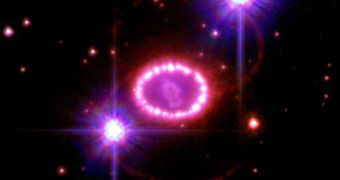The Holy Bible describes how just before Jesus was born a star appeared to the East, guiding the Magi towards his birth place. That's fine from a religious point of view. However, astronomers are more curios when it comes to unexplained cosmic events such as the sudden appearance of a star on the sky. So, over the years a lot of theories emerged, among which that the bright appearance on the night sky was generated by a supernova explosion, either meteors or comets or even by Aurora Borealis.
Recently, Fred Grosse, a professor of physics from the Susquehanna University in Selinsgrove, suggested that all the previous theories might still be valid, although he says that a much more common event could be responsible for it. A planetary conjunction. Conjunction of planets happened relatively often in the solar system, as planets pass very near to each other on their orbits around the Sun. Due to the fact that one planet has a shorter orbit than the other, multiple conjunctions can occur in relatively small amounts of time in a kind of optical illusion.
By calculating the planets' positions on the night sky as they where in 6 BCE, Grosse revealed that in that year at least three conjunctions took place between the planets Jupiter and Saturn. As the planets came closer and closer to each other, they started looking more like a bright large object from the Earth perspective, rather than two separate ones. Such events only take place once every 140 years, thus astronomers of that time had no knowledge of the periodicity of this phenomena.
Though Grosse's theory regarding the appearance of the bright star to the East certainly appears valid, it is not the only one. For example a supernova could be held responsible for the event such as the one documented in 1006, which is the brightest supernova in mankind's recorded history, that had an apparent brightness bigger than that of the Sun and was visible on the sky for more than two years after it first appeared. Similar supernova events have been documented by the Chinese in the years 4 and 5 BCE, who named them 'guest stars'.

 14 DAY TRIAL //
14 DAY TRIAL //